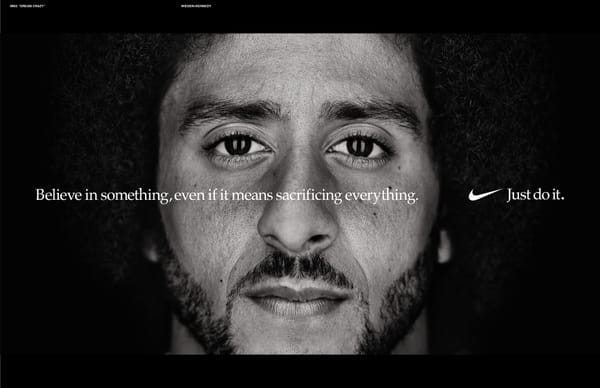Storytelling for Small Business Marketing: A Mini-Guide
Welcome to the ultimate guide to storytelling for small businesses! If you’re wondering why storytelling matters or how it can boost your marketing game, you’re in the right place.

Let’s dive into the magic of stories and how they can transform your brand from “just another business” into a memorable, engaging entity that customers love.
Table of Contents
- Foundations of Business Storytelling
- Elements of a Compelling Business Story
- Types of Stories You Can Tell
- Storytelling Frameworks
- Crafting Your Story
- Integrating Storytelling into Your Marketing Strategy
- Using Stories to Define Your Brand Identity
- Storytelling in Market Research and Customer Personas
- Crafting a Story-Driven Unique Value Proposition
- Aligning Your Marketing Goals with Your Brand Narrative
- Storytelling Across Marketing Channels
- Adapting Your Story for Different Platforms
- Creating a Consistent Narrative Across All Touchpoints
- Examples of Successful Multi-Channel Storytelling Campaigns
- From Strategy to Execution - Storytelling in Action
- Using Storytelling for Campaign Ideation
- Measuring the Impact of Your Storytelling Efforts
- Case Studies: Small Businesses Succeeding with Storytelling Conclusion: Crafting Your Storytelling Strategy
Synopsis
"Storytelling for Small Business Marketing: A Mini-Guide" is an essential resource for small business owners looking to harness the power of narrative in their marketing efforts. This comprehensive guide takes you on a journey through the art, science and theatre of storytelling in business, from understanding the basic elements of a compelling story to implementing story-driven campaigns across multiple channels.
Learn how to craft your brand's unique narrative, develop story-based customer personas, and create a powerful Unique Value Proposition using the TALE framework. Discover how to adapt your story for different marketing platforms while maintaining a consistent brand voice. Through real-world examples and case studies, see how other small businesses have successfully used storytelling to drive growth and customer engagement.
Whether you're new to marketing or looking to refresh your strategy, this guide provides practical, actionable advice to help you transform your brand's story into a powerful marketing tool. By the end, you'll have the knowledge and inspiration to craft a narrative that resonates with your audience and sets your business apart in a crowded marketplace.
Storytelling for Small Business Marketing: A Mini-Guide
Introduction: The Power of Story in Business
Welcome to the ultimate guide to storytelling for small businesses! If you're wondering why storytelling matters or how it can boost your marketing efforts, you're in the right place. Let's dive into the magic of stories and how they can transform your brand from "just another business" into a memorable, engaging entity that customers love.
Picture this: You're scrolling through your social media feed, bombarded by countless adverts and promotions. Suddenly, one catches your eye. It's not shouting about discounts or features. Instead, it's telling a story – one that resonates with you, makes you smile, maybe even brings a tear to your eye. That's the power of storytelling in business.
Storytelling is an ancient art form that continues to play a vital role in modern business. Stories evoke emotions, making your brand memorable and fostering an emotional connection with your audience. In a world where consumers are bombarded with information, a compelling story helps your business stand out.
But why does storytelling matter so much for small businesses? Let's break it down:
- Emotional Connection: Stories evoke emotions, and emotions drive decisions. When customers feel connected to your brand's story, they're more likely to choose you over competitors.
- Memorability: In a sea of forgettable adverts and promotions, a good story sticks in the mind. It gives customers something to remember you by – and to tell others about.
- Differentiation: Your story is uniquely yours. In a market where products and services can often seem similar, your narrative sets you apart.
- Trust Building: Stories humanise your brand. They show there are real people behind your business, with genuine passions and values.
In this guide, we'll explore how you can harness the power of storytelling to elevate your small business. We'll look at how storytelling can be integrated into every aspect of your marketing strategy, from defining your brand identity to executing campaigns and measuring results.
So, are you ready to turn your business into a page-turner that customers can't put down? Let's get started!
Chapter 1: Foundations of Business Storytelling
Every business has a story. Whether you're a tech startup disrupting an industry or a family-owned pottery studio preserving ancient techniques, your unique narrative is what sets you apart in a crowded marketplace. But what makes a compelling business story, and how can you craft one that resonates with your audience?
Elements of a Compelling Business Story
A great business story, much like any great tale, has several key elements:
- Characters: In business storytelling, your customers are often the heroes, with your brand playing a supporting role.
- Conflict: This is the problem or challenge your customers face – the reason your business exists.
- Resolution: How your product or service overcomes conflict.
- Emotion: The feelings your story evokes in your audience.
- Authenticity: Real, authentic experiences your audience can relate to.
Remember, in your business story, you're not the hero – you're the guide. Spoiler alert: the hero of your story isn't you—it's your customer. Your job is to guide them through their journey, helping them overcome challenges and achieve their dreams.
Types of Stories You Can Tell
There are various types of stories you can weave into your marketing strategy:
- Brand Story: This is your overarching narrative – why your business exists, what you stand for, and where you're going.
- Customer Stories: These are testimonials and case studies that showcase how your products or services have helped real people.
- Product Stories: These focus on the development, features, and benefits of specific products or services.
- Employee Stories: These humanise your brand by showcasing the people behind your business.
- Community Impact Stories: These highlight how your business contributes to your local or global community.
Storytelling Frameworks
To help structure your stories effectively, there are several frameworks you can use. One such framework is SERVE:
- S - Status Quo: The current situation or problem.
- E - Event: The catalyst for change.
- R - Response: The initial reaction to the event.
- V - Voyage: The journey of change.
- E - Emergence: The resolution and new status quo.
While SERVE is a powerful tool, it's just one of many. Other popular storytelling frameworks include:
- The Hero's Journey: A classic structure that takes the hero (your customer) through various stages of a transformative adventure.
- Before-After-Bridge: This simple structure shows the situation before your product/service, after it, and how you bridge the gap.
- Problem-Agitate-Solve: This framework focuses on the customer's pain point, amplifies it, then presents your solution.
The key is to choose a framework that feels natural for your brand and helps you communicate your message effectively.
Crafting Your Story
Now that we've covered the basics, let's look at how you might craft a simple brand story:
- Start with your 'why': Why did you start your business? What problem were you trying to solve?
- Identify your hero: Who are your customers, and what challenges do they face?
- Highlight the journey: How does your business help customers overcome their challenges?
- Show the transformation: What does success look like for your customers after engaging with your business?
- Keep it authentic: Use real experiences and genuine emotions to make your story relatable.
Remember, storytelling isn't about fabricating a fancy tale. It's about articulating the very real passion, purpose, and value that drive your enterprise every day.
Chapter 2: Integrating Storytelling into Your Marketing Strategy
Now that we've laid the foundation of business storytelling, let's explore how to weave this powerful tool into the fabric of your marketing strategy. A story-driven approach can transform your marketing from a series of disjointed tactics into a cohesive, compelling narrative that resonates with your audience.
Using Stories to Define Your Brand Identity
Your brand identity is more than just your logo or colour scheme—it's the personality of your business, the values you stand for, and the promises you make to your customers. Storytelling can help you articulate and communicate this identity in a way that's both memorable and meaningful.
Start by asking yourself:
- What's your company's origin story?
- What values drive your decision-making?
- What makes your approach unique in your industry?
Use these answers to craft a brand narrative that goes beyond what you do to explain why you do it. This story should be the North Star guiding all your marketing efforts.
Storytelling in Market Research and Customer Personas
Stories aren't just for your customers—they can also help you understand your customers better. When conducting market research, look beyond demographics and dig into the narratives that drive your customers' lives:
- What challenges do they face daily?
- What are their hopes and dreams?
- How do they see themselves, and how do they want to be seen?
Use these insights to create rich, story-based customer personas. Instead of "25-35 year old urban professionals," think "Alex, the ambitious startup employee who dreams of launching their own business but struggles with work-life balance."
These story-driven personas will help you create marketing messages that truly resonate with your audience's lived experiences.
Crafting a Story-Driven Unique Value Proposition
At the heart of your brand story is your Unique Value Proposition (UVP) - a clear statement that describes the benefit of your offer, how you solve your customer's needs, and what distinguishes you from the competition. A story-driven UVP can be a powerful tool in your marketing arsenal.
One framework for creating a compelling UVP is the TALE method:
- T - Target: Who are your ideal customers?
- A - Aspiration: What do your customers want to achieve?
- L - Landscape: What obstacles are preventing your customers from achieving their goals?
- E - Elevation: How does your product or service uniquely help customers overcome obstacles and achieve their goals?
Let's see how a small business might use this:
Imagine "SoundScape," an innovative music therapy startup. Their TALE might look like this:
- Target: Individuals struggling with stress and anxiety, particularly young professionals in high-pressure jobs.
- Aspiration: To find a natural, enjoyable way to manage stress and improve mental wellbeing.
- Landscape: Lack of time, scepticism about alternative therapies, and difficulty in maintaining consistent stress-management practices.
- Elevation: Providing personalised, science-backed music therapy sessions that can be easily integrated into daily life, with measurable results.
SoundScape could turn this into a UVP like:
"SoundScape helps stressed-out professionals find calm in the chaos, with personalised music therapy that turns your favourite tunes into powerful stress-busting tools, seamlessly fitting into your busy life."
This UVP follows a simple structure:
[Company name] helps [target audience] [achieve aspiration] by [unique method/product], [key benefit].
This UVP tells a mini-story that resonates with the target audience, addresses their challenges, and clearly states how SoundScape helps them achieve their aspirations.
Aligning Your Marketing Goals with Your Brand Narrative
Every marketing goal you set should tie back to your overarching brand story. For example:
- If your brand story is about empowering small businesses, your marketing goals might focus on educating and providing resources to entrepreneurs.
- If your narrative centres on innovation in healthcare, your goals could include increasing awareness of new medical technologies and their benefits.
By aligning your goals with your narrative, you ensure that every marketing effort not only drives business results but also reinforces your brand story.
Chapter 3: Storytelling Across Marketing Channels
In today's multi-channel world, it's crucial to tell a consistent story across all platforms while adapting to the unique strengths of each medium. Let's explore how to do this effectively.
Adapting Your Story for Different Platforms
While your core narrative should remain consistent, how you tell it should vary based on the platform:
- Website: This is where you can tell your full brand story. Use your homepage to introduce your narrative and dedicate an "About Us" page to diving deeper.
- Social Media: Break your story into bite-sized pieces. Use Instagram for visual storytelling, Twitter for quick anecdotes, and Facebook for community-building narratives.
- Email Marketing: Use storytelling to guide subscribers through a journey, from welcome series to regular newsletters that reinforce your brand narrative.
- Blog: Deep-dive into different aspects of your story, showcase customer success stories, and provide valuable, story-driven content.
- Video: Whether on YouTube or TikTok, use the power of visual storytelling to bring your narrative to life.
Creating a Consistent Narrative Across All Touchpoints
Consistency is key in storytelling. Ensure that whether a customer encounters your brand on social media, your website, or in-person, they receive the same core message and brand personality.
Create a "story bible" for your brand—a document that outlines your core narrative, brand voice, and key messages. This will help maintain consistency across all channels and among different team members creating content.
Examples of Successful Multi-Channel Storytelling Campaigns
Let's look at a hypothetical example of how a small business might implement a multi-channel storytelling campaign:
"Minerva's Mentors," a startup offering virtual mentorship for women in STEM fields, crafts a campaign around the story of breaking barriers and fostering innovation:
- Website: Features an interactive timeline of women's achievements in STEM, with Minerva's Mentors positioned as the next chapter in this ongoing story.
- Instagram: Shares inspiring quotes and mini-biographies of women in STEM, both historical figures and current mentors.
- Blog: Publishes articles on challenges women face in STEM fields and how mentorship can help overcome them.
- Email: Sends a series of newsletters following a mentee's journey from self-doubt to career success.
- YouTube: Creates "Day in the Life" videos of successful women in STEM, showcasing the impact of mentorship.
By maintaining a consistent narrative across all these channels, Minerva's Mentors reinforces its brand story and creates multiple touchpoints for customers to engage with its message.
Chapter 4: From Strategy to Execution - Storytelling in Action
Now that we've researched the why and how of storytelling in marketing, it's time to put it all into action. In this chapter, we'll look at how to use storytelling for campaign ideation, how to measure its impact, and examine some real-world examples of small businesses succeeding with storytelling.
Using Storytelling for Campaign Ideation
When brainstorming your next marketing campaign, start with your story. Ask yourself:
- What aspect of our brand narrative haven't we highlighted recently?
- What customer pain points can we address through storytelling?
- How can we involve our customers in telling our story?
Here's a simple process to generate story-driven campaign ideas:
- Identify the Theme: Choose an element of your brand story to focus on.
- Find the Conflict: What challenge does this theme address for your customers?
- Showcase the Journey: How does your product or service help overcome this challenge?
- Highlight the Transformation: What does success look like for your customers?
- Choose Your Medium: Decide which channels will best communicate this story.
For example, a boutique travel agency specialising in solo adventures might create a campaign around the theme of "Rediscovering Yourself Through Travel." The conflict is the fear and uncertainty of travelling alone, the journey is planning and embarking on a solo trip, and the transformation is increased confidence and self-discovery.
Measuring the Impact of Your Storytelling Efforts
While the emotional impact of storytelling can be hard to quantify, there are several ways you can gauge its effectiveness:
- Engagement Metrics: Look at likes, shares, comments, and time spent on your story-driven content.
- Conversion Rates: Compare how well story-driven campaigns convert compared to traditional campaigns.
- Brand Recall: Ask customers what they remember about your brand to see if your story is sticking.
- Customer Lifetime Value: Check if customers who engage with your brand story tend to stick around longer and spend more.
- Online Sentiment: Keep an eye on how people talk about your brand online. Are they using emotional language? Sharing your story?
Remember, storytelling is often about long-term brand building. While you may see some immediate results, the true impact often reveals itself over time.
Case Studies: Small Businesses Succeeding with Storytelling
Let's look at two hypothetical examples of small businesses using storytelling effectively:
1. "Lingo Leap" - Language Learning App Story Theme: Breaking down cultural barriers through language Campaign: "Words That Bridge Worlds"
- Collected and shared stories of how learning a new language changed users' lives, from making new friends to landing dream jobs abroad.
- Created a podcast featuring interviews with polyglots and culture experts.
- Launched a social media challenge encouraging users to share their "lost in translation" moments. Result: 40% increase in app downloads and a 35% boost in daily active users.
2. "PetPal" - Pet-Sitting Service Story Theme: Keeping pets happy and healthy while owners are away Campaign: "Tails from Home"
- Used GPS-enabled pet cameras to capture and share moments of pets enjoying themselves while their owners were away.
- Created a blog series on the secret lives of pets, mixing humour with expert pet care advice.
- Launched a photo contest for the most heartwarming pet reunion moments. Result: 60% increase in bookings and a 45% boost in customer referrals.
These businesses succeeded by aligning their campaigns with their brand stories, engaging customers emotionally, and consistently reinforcing their narratives across multiple touchpoints.
Conclusion: Crafting Your Storytelling Strategy
As we wrap up our journey through the world of storytelling for small business marketing, let's recap the key takeaways:
- Your brand story is your most valuable marketing asset. It's what sets you apart in a crowded marketplace.
- Effective storytelling is about making your customer the hero, with your business playing the supporting role of guide or mentor.
- Integrate your story into every aspect of your marketing strategy, from market research to campaign execution.
- Adapt your story for different channels while maintaining a consistent core narrative.
- Use storytelling to generate campaign ideas and measure its impact on your business goals.
Remember, crafting and telling your brand story is not a one-time task, but an ongoing process. As your business grows and evolves, so will your story. The key is to stay true to your core values and keep your customers at the heart of your narrative.
So, what's next? Here are some steps to start developing your brand's unique narrative:
- Reflect on your business's origin, values, and vision.
- Identify your target audience and the challenges they face.
- Craft your core brand story using one of the frameworks we discussed.
- Create a story-driven Unique Value Proposition using the TALE method.
- Map out how this story can be told across your different marketing channels.
- Plan a small, story-driven campaign to test your narrative.
Remember, every business has a story. By harnessing the power of storytelling, you can create deeper connections with your customers, stand out from the competition, and drive meaningful growth for your small business.
Your story is waiting to be told. What will your first chapter be?
As you embark on your storytelling journey, remember that practice makes perfect. Don't be afraid to experiment, gather feedback, and refine your narrative over time. Your brand story is a living, breathing entity that will grow and evolve with your business.
So, grab your pen (or keyboard), summon your creativity, and start weaving the tales that will captivate your audience and elevate your brand. The world is waiting to hear your story – make it one worth telling!




